Article
Turn 1:
The Philippines prepares for a full-scale assault on Malaysia. Several battleships and transports were divided into two groups: Group A, which would attack from the east, and Group B, which would circle around Indonesia-controlled islands, and attack from the south. A supply fleet is positioned safely behind the frontlines to provide support and supplies to both groups. This fleet will also act as a second defensive line in case Malaysia counterattacks by sea.
Turn 2:
Group A and Group B initiate a simultaneous off-shore bombardment with their long-range battleships and missile cruisers. This is a standard move before every beach landing. The Philippines' aim is to soften up any Malaysian defences placed on the shores. This may also serve as a warning to all Malaysian civilians, so as to give them ample time to evacuate the area.
Turns 3-4:
Group A and Group B aircraft carriers unleash a massive air-to-ground bombing campaign against Malaysia. The force was escorted by several fighters and fighter-bombers, whose task is to protect the heavy bombers from possible enemy air interceptors. Several nations' fighter plane groups were also used as reconnaisance aircraft. Their task was to scout out enemy anti-air artillery (AAA) and surface-to-air missile (SAM) launchers, then contact the fighter-bombers to destroy them. The air force met moderate resistance, but did not suffer heavy casualties.
Turn 5:
This may be considered a lull in the heavy bombardment by the Philippines. Instead of high-explosive (HE) shells, the navy began shooting out smoke shells towards the shores. At this time, Asia Journal war correspondents reported sudden movements from the Philippine ground troops, specifically the Philippine Marines, who were on board transport ships. The Philippines could have been preparing for beach landings at this time.
Turns 6-7:
Under the cover of smoke shells on the beachheads, Group A and Group B send out hundreds of landing craft to Malaysian beaches. From the information provided to Asia Journal, there were eight main points along the Malaysian defences where the Marines would strike. After neutralizing those defences, they would then signal the Navy to bring in the heavier and better-equipped Army. Tanks were being prepped into heavy landing craft to assist the occupation of the beaches.
According to satellite imagery provided by the Armed Forces of the Philippines (AFP), The Malaysian military begun to reinforce their front lines in the region. They set up blockades and trenches along the indicated areas. There were sightings of foreign heavy armor platoons converging along their presumed Headquarters. There were also several reports of rapid troop movements from Pahang and Kuala Lumpur.
Turn 8:
The Philippines successfully breached through the beach defenses, and were pushing the Malaysians inland. Philippine light and medium tanks began landing at a rapidly-established Headquarters, or Forward Operating Base. After clearing out the rest of the trenches and bunkers, ground forces from Groups A and B gather at the Philippine HQ, and pressed the attack on the confirmed Malaysian HQ in the region. Group B was able to initiate hard landings against the remaining defences, and also successfully blocked the western side to prevent enemy flankers from punching through the gap.
Unfortunately, two ground battalions from Group A were taken by surprise as they stumbled upon a Malaysian minefield. Pakistani troops, who were stationed across the border of Pahang, took this opportunity to ambush the Philippine soldiers who were in disarray. Light tanks charged through the right flank of the convoys and pushed back a majority of the Filipinos to the beaches. The Filipinos were able to halt the blitzkrieg with the help of its foreign allies, who had a tank company and three infantry platoons stationed as the Phlippine convoy's rear guard.
Although the Philippines committed a strategic blunder during this turn, they were still able to capture the Malaysian HQ and force the remaining enemies to retreat. The entire region of Southern Peninsular-Malaysia has officially fallen into Philippine hands.
Mabuhay ang Dakilang Pilipinas!
Previous article:
Growing World Power? Philippines on a roll (12 years ago)
Next article:
Battle Strategies: Philippines storms Pahang region (12 years ago)
About the game:
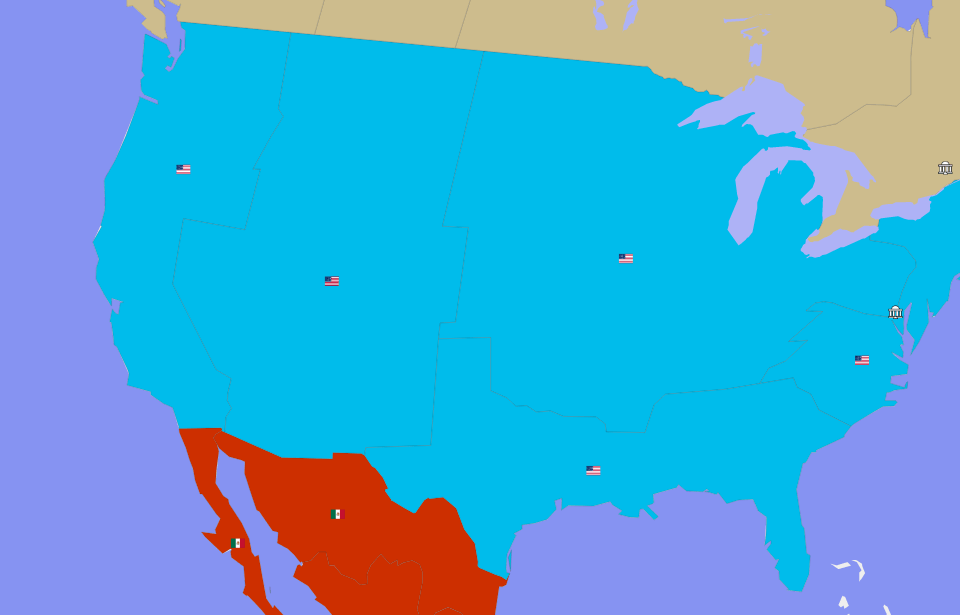
USA as a world power? In E-Sim it is possible!
In E-Sim we have a huge, living world, which is a mirror copy of the Earth. Well, maybe not completely mirrored, because the balance of power in this virtual world looks a bit different than in real life. In E-Sim, USA does not have to be a world superpower, It can be efficiently managed as a much smaller country that has entrepreneurial citizens that support it's foundation. Everything depends on the players themselves and how they decide to shape the political map of the game.
Work for the good of your country and see it rise to an empire.
Activities in this game are divided into several modules. First is the economy as a citizen in a country of your choice you must work to earn money, which you will get to spend for example, on food or purchase of weapons which are critical for your progress as a fighter. You will work in either private companies which are owned by players or government companies which are owned by the state. After progressing in the game you will finally get the opportunity to set up your own business and hire other players. If it prospers, we can even change it into a joint-stock company and enter the stock market and get even more money in this way.
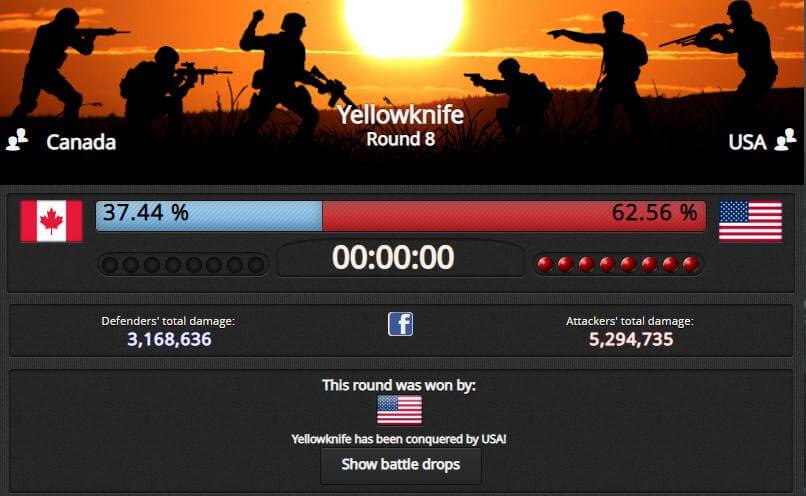
In E-Sim, international wars are nothing out of the ordinary.
Become an influential politician.
The second module is a politics. Just like in real life politics in E-Sim are an extremely powerful tool that can be used for your own purposes. From time to time there are elections in the game in which you will not only vote, but also have the ability to run for the head of the party you're in. You can also apply for congress, where once elected you will be given the right to vote on laws proposed by your fellow congress members or your president and propose laws yourself. Voting on laws is important for your country as it can shape the lives of those around you. You can also try to become the head of a given party, and even take part in presidential elections and decide on the shape of the foreign policy of a given state (for example, who to declare war on). Career in politics is obviously not easy and in order to succeed in it, you have to have a good plan and compete for the votes of voters.
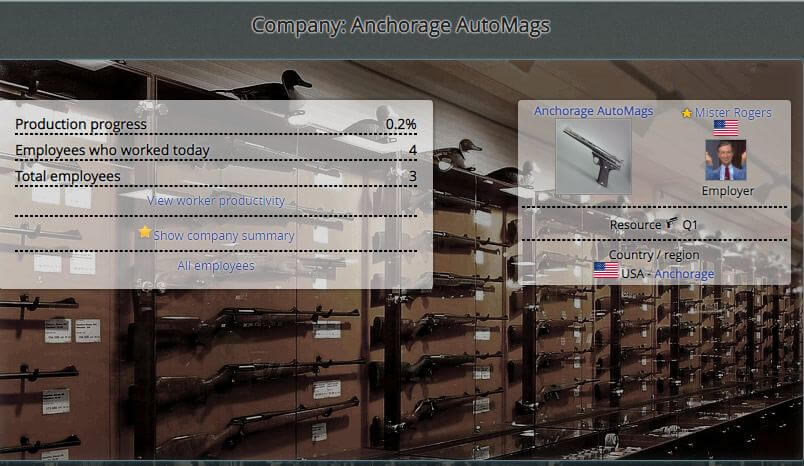
You can go bankrupt or become a rich man while playing the stock market.
The international war.
The last and probably the most important module is military. In E-Sim, countries are constantly fighting each other for control over territories which in return grant them access to more valuable raw materials. For this purpose, they form alliances, they fight international wars, but they also have to deal with, for example, uprisings in conquered countries or civil wars, which may explode on their territory. You can also take part in these clashes, although you are also given the opportunity to lead a life as a pacifist who focuses on other activities in the game (for example, running a successful newspaper or selling products).
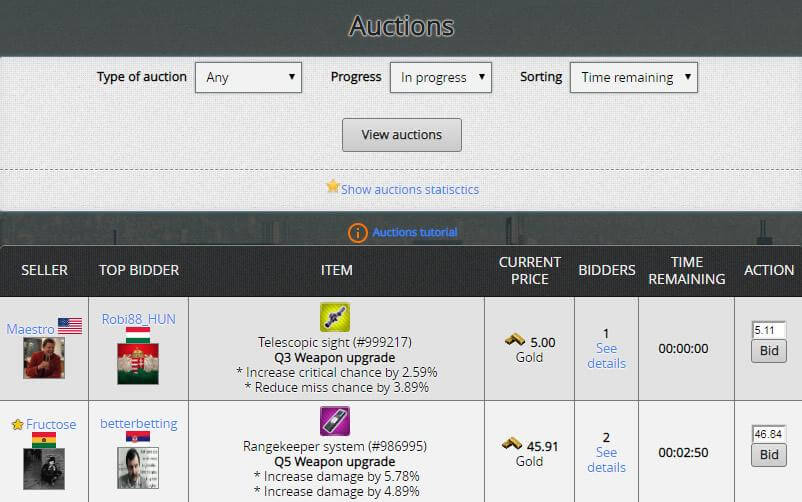
At the auction you can sell or buy your dream inventory.
E-Sim is a unique browser game. It's creators ensured realistic representation of the mechanisms present in the real world and gave all power to the players who shape the image of the virtual Earth according to their own. So come and join them and help your country achieve its full potential.
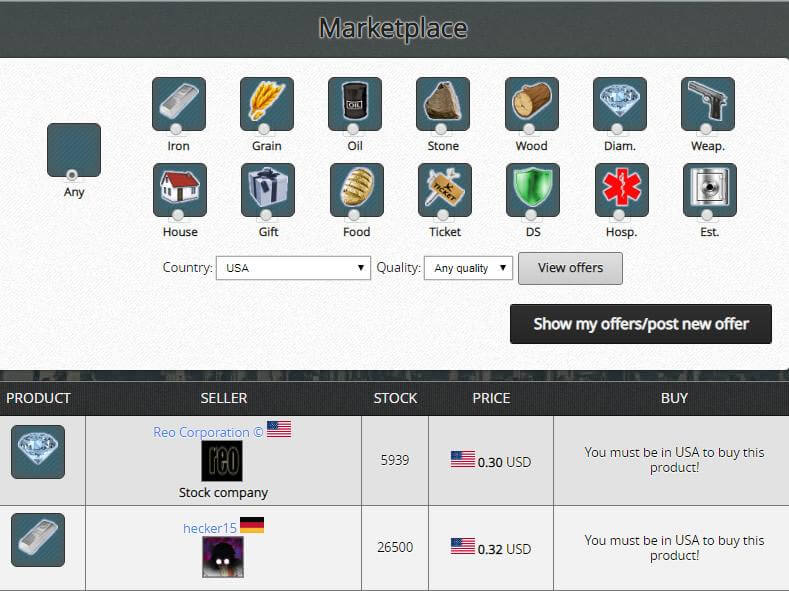
Invest, produce and sell - be an entrepreneur in E-Sim.
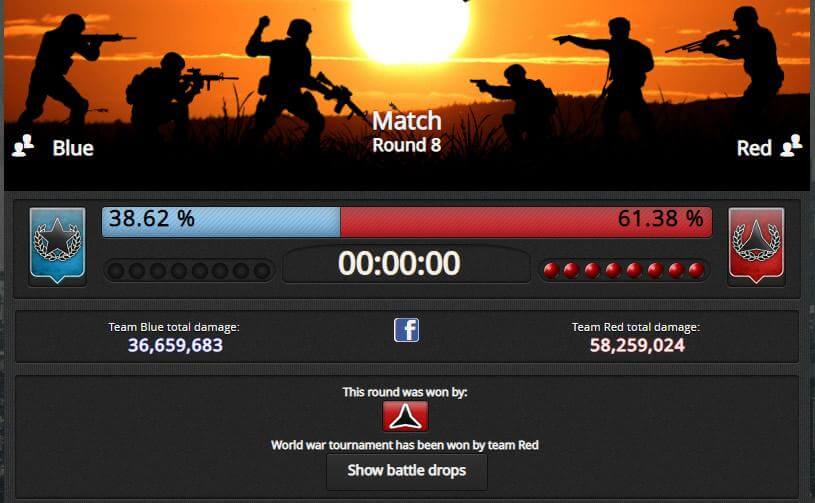
Take part in numerous events for the E-Sim community.

